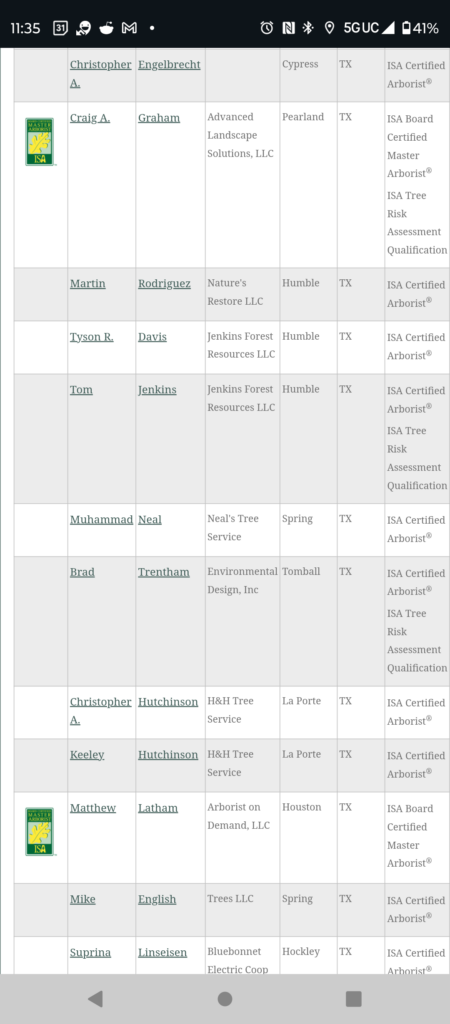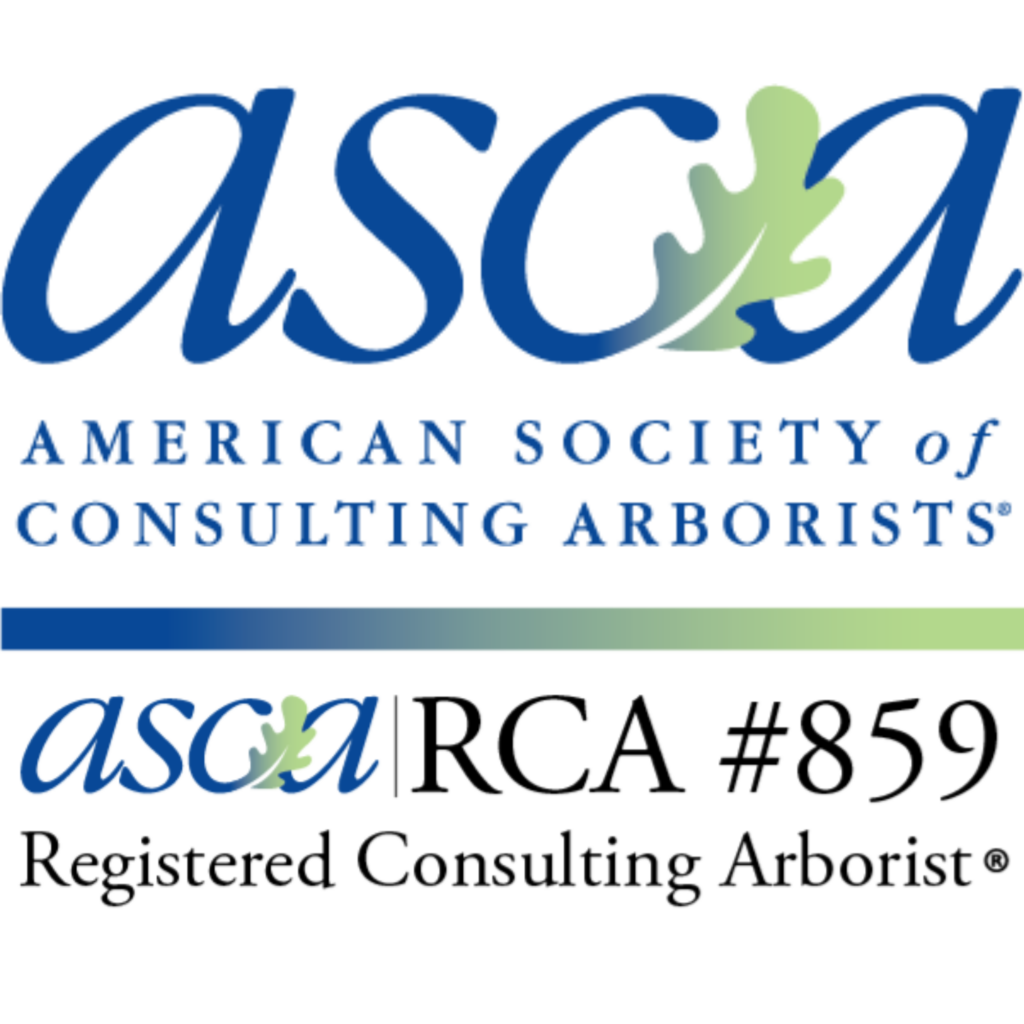How to Pick a Qualified Arborist for Your Trees: Avoiding Misleading Claims

I recently encountered a situation that underscored the importance of verifying an arborist’s qualifications before entrusting them with your trees. A client connected me with her Landscaper who informed the client that a “degreed master arborist” from another company was being recommended as the best choice for their tree care needs… of course that jerk did it on a text message chain WITH MY CLIENT, obviously trying to oust me… 🤦♂️
Intrigued, I decided to do my due diligence and look up the company’s credentials through the International Society of Arboriculture (ISA). What I found was troubling: despite this landscaper’s claims, the company did not have any ISA Board Certified Master Arborists (BCMAs) locally on staff…. This was obvious to me, because there are only 6 BCMAs in the Houston area, and we all know each other …
This experience highlights an unfortunate reality in the tree care industry—some companies or individuals may exaggerate or outright fabricate their qualifications to gain trust. For property owners, this can lead to poor tree care, wasted money, and even significant damage to your valuable trees. That’s why it’s crucial to know how to choose a truly qualified arborist.
What Makes a Qualified Arborist?
Not all tree care professionals are created equal, and flashy titles or vague claims can be misleading. Here’s what you should look for when selecting an arborist:
1. Certified Credentials
The gold standard for arborist qualifications is certification by the International Society of Arboriculture, or ISA. Certified Arborists have demonstrated a strong understanding of tree biology, safety practices, pruning standards, and tree risk assessment. The highest level of ctertification—ISA Board Certified Master Arborist (BCMA)—represents the pinnacle of expertise and is held by fewer than 2% of arborists worldwide. If someone claims to have this designation, you can easily verify it through the ISA’s Find an Arborist tool online.
2. Experience Over Claims
Ask about the arborist’s experience, including the types of projects they’ve handled and how long they’ve been in the industry. Practical experience is often just as critical as formal education, as it equips the arborist to address complex tree care challenges.
3. Adherence to Industry Standards
Qualified arborists follow recognized standards, such as the ANSI A300 for tree pruning and care, ensuring your trees are cared for in a way that promotes long-term health and safety. They should also prioritize safety, working in compliance with OSHA regulations for tree care operations.
4. Proof of Insurance
Always confirm that the arborist has liability insurance and workers’ compensation coverage. This protects you from being held financially responsible in case of accidents or damages.
5. Clear and Honest Communication
An honest arborist will explain their recommendations clearly and back them up with science and best practices. Be wary of anyone using scare tactics or vague terminology to pressure you into unnecessary services.
Warning Signs to Watch For
Unfortunately, not all companies play by the rules. Here are some red flags to avoid:
- Exaggerated Claims: Phrases like “degreed master arborist” or “tree expert” without proof of certification.
- Lack of Transparency: Refusal to provide their ISA certification number or proof of insurance.
- Door-to-Door Sales: Reputable arborists don’t need to knock on doors to find work. Be especially wary of unsolicited offers after storms.
- Improper Practices: Suggesting harmful techniques like topping or over-pruning.
Why Certification Matters
When a company misrepresents its qualifications, it’s not just unethical—it’s fraud. Arborists who lack proper credentials may damage your trees or provide incorrect advice, leading to long-term consequences for your landscape. As an ISA Board Certified Master Arborist (BCMA) and ASCA Registered Consulting Arborist (RCA), I’ve seen firsthand the damage caused by unqualified individuals.

Remember, caring for trees is both an art and a science. Hiring a properly certified arborist ensures your trees receive the best care possible, protecting their health, your property, and your investment.
The Bottom Line
Choosing the right arborist takes a little effort, but it’s worth it to protect the health and beauty of your trees. Always verify certifications, ask the right questions, and trust only those with proven expertise and integrity. If you’re unsure, don’t hesitate to contact me at Arborist On Demand. I’d be happy to help you care for your trees the right way.
My Best,
Matt Latham
ISA Board Certified Master Arborist #TX-3737B
ASCA Registered Consulting Arborist #859
📞 713.385.7040 | 🌐 www.arboristondemand.com
